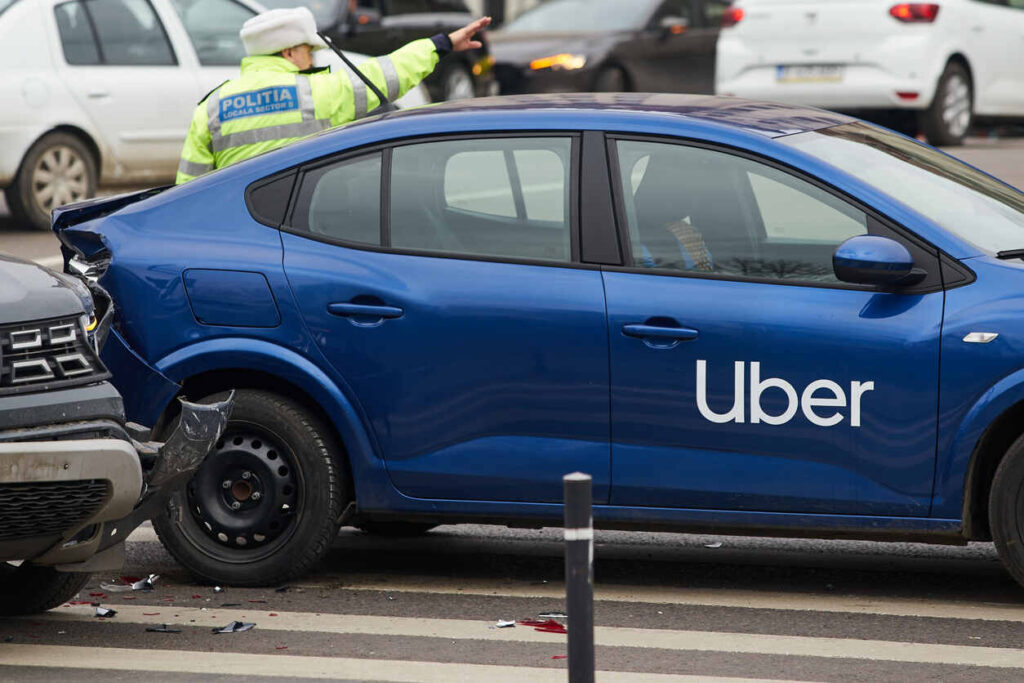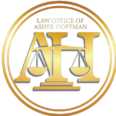Why Rideshare Accident Victims in Long Beach Need Strong Legal Representation
Rideshare services make getting around Long Beach convenient, but crashes involving Uber and Lyft vehicles create complicated insurance and liability questions. A single collision can affect the rideshare driver, the passenger, other motorists, a transportation network company, and sometimes a third party responsible for road design or maintenance.
While you focus on medical care, multiple insurers may start calling, each attempting to control the narrative and reduce their payment. Having an experienced Uber accident lawyer in Long Beach helps you protect your rights from the first day and positions your claim for a fair result.

At the Law Offices of Asher Hoffman, California clients work directly with an attorney who understands both the legal and human sides of serious injuries. Founding attorney Asher Hoffman brings trial-tested advocacy and a client-first approach informed by his background in psychology and personal experience with long-term recovery. Starting with an initial consultation, we combine careful investigation with clear communication so you always know what is happening and what comes next.
Which Insurance Applies in an Uber or Lyft Crash
Rideshare insurance in California depends on what the driver was doing at the time of the crash, which is why documenting the trip status is critical. The law divides rides into three periods, determining which policy applies and in what amounts.
- Period 1, app on, no ride accepted. Minimum primary coverage applies before a match is received, with additional excess coverage during this stage. Verifying whether the app is active is important because it can unlock rideshare coverage that is unavailable when the app is not running.
- Period 2, ride accepted, but no passenger yet. The company provides primary commercial liability coverage during this interval, which is significantly higher than Period 1.
- Period 3, passenger in the vehicle. The higher primary liability coverage remains in effect while a passenger is on board. Historically, passengers also benefited from substantial uninsured and underinsured motorist coverage during this period; however, a 2025 legislative change (SB 371) reduces the required UM and UIM limits, making it essential to identify every available source of recovery when injuries are severe.
Uber and Lyft may also describe contingent, comprehensive, and collision benefits that depend on the driver’s personal policy. Policy details can vary by market and time period, so verifying the exact coverages that applied to your crash is an essential early step.
Common Causes of Rideshare Accidents in Long Beach
Rideshare collisions often look like ordinary crashes at first glance, but the pressures and patterns of ride-hail create additional risks. We investigate the operational context behind the crash to determine where responsibility lies and which insurers are liable for payment.
Frequent causes include:
- Distracted driving tied to the app. Navigation prompts, ride requests, and messaging create in-vehicle distractions.
- Unsafe pickup or drop-off maneuvers. Sudden stops, double parking, or mid-block passenger interactions lead to rear-end or sideswipe impacts.
- Speeding and aggressive lane changes. Hurry between trips or tight schedules can increase the severity of crashes.
- Nighttime and weekend driving. Higher crash and DUI exposure when many ride-hail trips occur.
- Fatigue. Extended driving hours to meet earnings goals can reduce reaction time.
Who May Be Liable in a California Rideshare Crash
Responsibility is not limited to the driver. Depending on the facts, liability can extend to several parties. Correctly identifying every responsible entity prevents your recovery from being limited to a single policy.
Potentially liable parties include:
- The rideshare driver for negligent operation.
- The transportation network company for insurance obligations and potential policy violations.
- Another motorist who caused or contributed to the collision.
- A property owner, business, or event venue that created dangerous loading conditions.
- A public entity responsible for unsafe roadway design or lighting, subject to strict notice deadlines.
- A vehicle or parts manufacturer when a defect contributes to the crash.
Evidence We Move Quickly to Preserve in California Uber and Lyft Claims
Key proof can disappear within days. Our team sends immediate preservation demands and coordinates targeted discovery so that insurers do not control the record.
Time-sensitive evidence includes:
- Trip data and status logs showing the exact period and insurance that applies.
- App communications and GPS breadcrumbs establish speed, route, and pickup or drop-off location.
- Dashcam and third-party video from nearby businesses or traffic cameras.
- Driver background and training records, if relevant.
- Vehicle event data capturing braking and throttle inputs.
- 911 recordings, scene photos, and witness statements before memories fade.
Rideshare Accident Liability and Comparative Fault
California’s comparative fault rules allow you to pursue compensation even if you are alleged to share responsibility. Insurers sometimes blame passengers, pedestrians, or other motorists for choosing a curb location, opening a door, or crossing outside a crosswalk. We counter with scene measurements, sightline analysis, human-factors evidence, and trip data that demonstrate what constitutes reasonable care under the circumstances.
Establishing fault typically involves:
- Proving duty and breach using state law, city ordinances, and company policies.
- Linking that breach to the crash through documentation, video, and expert reconstruction.
- Demonstrating medical causation and the complete scope of damages with clear medical and economic evidence.
Common California Rideshare Accident Injuries and Their Long-Term Impact
Rideshare crashes can cause serious injuries that reshape daily life and plans. Immediate pain is only part of the picture. Many clients face surgeries, therapy, and ongoing limitations that impact their family responsibilities and employment. We work with treating providers and experts to document the full impact.
We frequently see:
- Traumatic brain injuries and concussions that affect memory and concentration.
- Spinal injuries, herniated discs, and chronic neck or back pain.
- Complex fractures to the wrists, ribs, pelvis, or legs.
- Internal organ injuries and internal bleeding.
- Facial injuries, lacerations, and scarring.
- Psychological trauma, including anxiety and post-traumatic stress.
What To Do After an Uber or Lyft Accident in Long Beach
The hours immediately following a crash can be confusing. These steps protect your health and your case, and they help your Long Beach Lyft accident lawyer or Uber accident attorney secure the right insurance coverage quickly.
- Call 911 and accept medical evaluation, even if symptoms seem minor.
- Get the police report number and confirm the driver’s name, license, and insurance.
- Screenshot your ride receipt, driver profile, and trip timeline within the app.
- Photograph vehicle damage, the pickup or drop-off location, signage, and lighting.
- Identify witnesses and nearby businesses that may have video.
- Avoid recorded statements and broad medical authorizations until you speak with an attorney.
- Contact the Law Offices of Asher Hoffman for guidance on next steps.
Compensation and Settlements for California Rideshare Injuries
A fair resolution should cover present and future needs. Because recent laws have reduced the required passenger UM and UIM limits during active trips, it is more important than ever to identify every available insurance policy and responsible party when injuries are significant. We prepare each matter as if it will be tried in court, which strengthens negotiations and helps prevent undervaluation.
Depending on the case, recoverable damages may include:
- Emergency transport, hospitalization, surgeries, and specialist care.
- Rehabilitation, therapy, and projected future medical expenses.
- Prescription costs, mobility aids, and home or vehicle modifications.
- Lost wages, diminished earning capacity, and job retraining.
- Pain, suffering, emotional distress, and loss of enjoyment of life.
- Scarring, disfigurement, and permanent impairment.
- Property loss and rideshare fare reimbursement are associated with the incident.
- Wrongful death damages for surviving family members.
How the Law Offices of Asher Hoffman Can Help
We combine local insight with hands-on representation. Clients speak directly with an attorney, receive honest answers about timelines and value, and never pay fees unless we achieve a successful outcome. Our process is personal and rigorous, focused on preserving evidence, building the medical record, and negotiating from a position of strength. If a fair settlement is not offered, we are prepared to litigate.
What you can expect:
- Direct access to an attorney who answers your questions and calls.
- Fast, focused investigation and evidence preservation.
- Clear guidance on medical documentation and financial options.
- Strategic negotiation that resists low offers and delay tactics.
- Trial-ready advocacy when litigation is in your best interest.
Contact Our Long Beach Uber, Lyft, and Rideshare Accident Lawyers Today
You do not have to navigate a complicated rideshare claim alone. The Law Offices of Asher Hoffman represent injured riders, drivers, and third parties across Long Beach, Los Angeles County, and throughout California. We focus on your recovery while we handle the legal and insurance issues.
Call us today at (562) 573-2979 or contact us online to schedule a complimentary consultation. Speak directly with a rideshare accident attorney who will put your recovery first.
